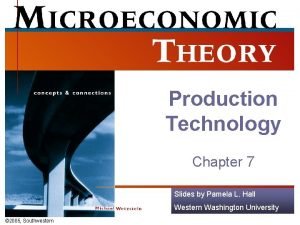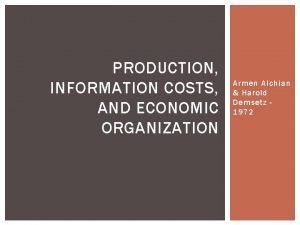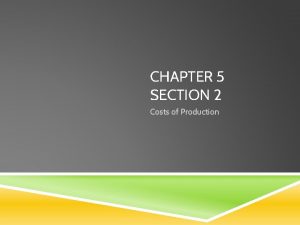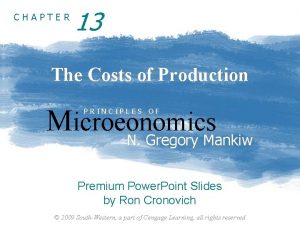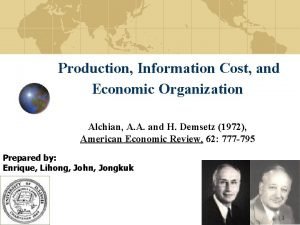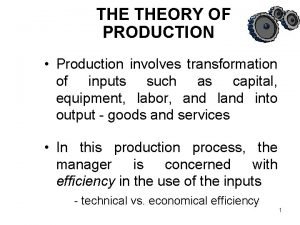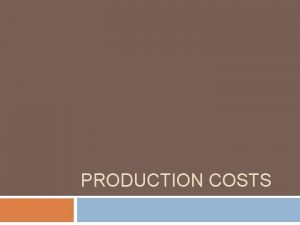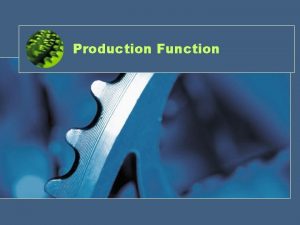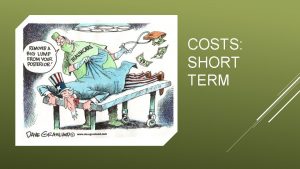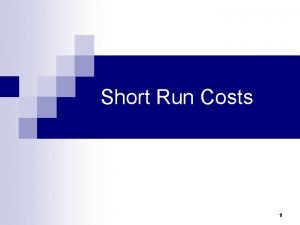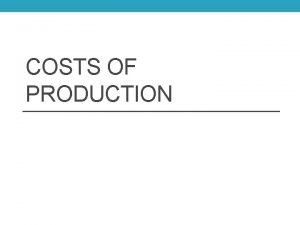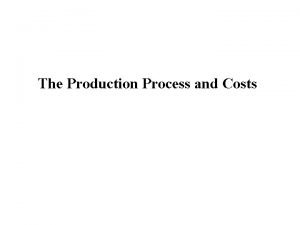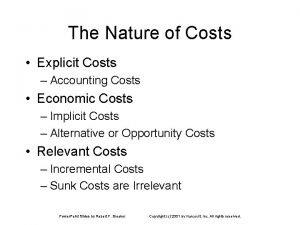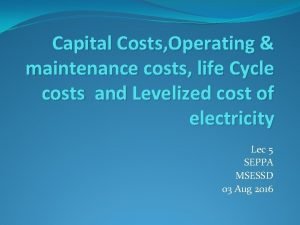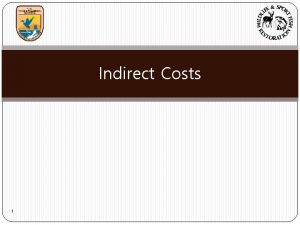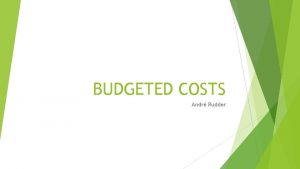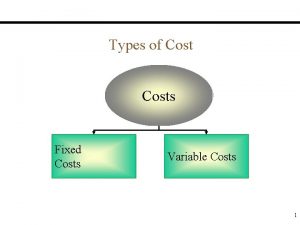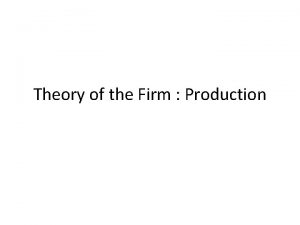The Production Function II u 1 Costs short















- Slides: 15

The Production Function II u 1. Costs - short run u measures u relationship u 2. - production & costs Costs - long run u scale expansion path u long run costs u 3. Returns to scale & economies of scale

1. Costs - short run u Fixed & variable costs u fixed = unavoidable u variable = avoidable u Costs rise as output increases u e. g. As L , TPP TC u given PK and PL u inverse relationship MP & MC, AC & AP u Measures of cost - Table 1

Measures of cost u Total costs: TC = TFC + TVC u Average costs: ATC = TC TPP u or TC Q u ATC = AFC + AVC u Marginal u ‘…the unit. ’ u Shape costs: MC = TC TPP extra cost of producing one more - Figures 1 to 3

Output TFC (Q) (£) 0 1 2 3 4 5 6 7 12 12 Total costs for firm X TVC TC (£) 0 10 16 21 28 40 60 91 12 22 28 33 40 52 72 103 TC TVC TFC fig

Average and marginal physical product b Output c APP MPP Quantity of the variable factor fig

Average and marginal costs Costs (£) MC x Outputfig(Q)

2. Costs - long run u. K & L are variable u Profit maximisation requires cost minimisation u Choice of technique: if u MPK PK > MPL PL u 20 2 > 32 8 u 10 > 4

Cost minimisation u i. e. last pound spent on K adds 10 units u Therefore u spend 1 extra pound on K, TPP rises by 10 u spend 2. 50 less on L, TPP falls by 10 u output is unchanged, but costs fall 1. 50 u Cost minimisation u MPK PK = MPL PL u tangency of isocost & isoquant

Scale expansion path & long run costs u Vary K & L TPP rises (no. of factories) u See Figure - scale expansion path u Long run average costs u Returns to scale u Scale economies

Units of capital (K) Deriving an LRAC curve from an isoquant map At an output of 100 LRAC = TC 1 / 100 TC O 1 fig Units of labour (L)

Units of capital (K) Deriving an LRAC curve from an isoquant map Expansion path 700 100 200 TC TC 5 6 7 fig Units of labour (L) TC 2 4 TC 1 TC 3 TC TC O 600 500 400 300

A typical long-run average cost curve Costs LRAC O Output fig

Returns to scale u (i) Increasing returns u LRAC ua % increase in inputs leads to a larger % increase in output u economies of scale u (ii) Constant returns u LRAC constant u a given % increase in inputs leads to the same % increase in output

Returns to scale u (iii) Decreasing returns u LRAC ua % increase in inputs leads to a smaller % increase in output u diseconomies of scale u Economies of scale u plant level economies u multi-plant economies u Diseconomies of scale

Conclusion u Cost minimisation - long run u Profit = Revenue - Cost u Profit maximisation - level? u Market structure: – Perfect competition – Monopolistic competition – Oligopoly – Monopoly
 Short short short long long long short short short
Short short short long long long short short short Alir produksi multimedia
Alir produksi multimedia Three stages of short run production function
Three stages of short run production function Production, information costs, and economic organization
Production, information costs, and economic organization Chapter 5 section 2 costs of production
Chapter 5 section 2 costs of production Tc fc vc example
Tc fc vc example Types of production costs
Types of production costs Production information costs and economic organization
Production information costs and economic organization Mrts
Mrts Hát kết hợp bộ gõ cơ thể
Hát kết hợp bộ gõ cơ thể Ng-html
Ng-html Bổ thể
Bổ thể Tỉ lệ cơ thể trẻ em
Tỉ lệ cơ thể trẻ em Chó sói
Chó sói Thang điểm glasgow
Thang điểm glasgow Bài hát chúa yêu trần thế alleluia
Bài hát chúa yêu trần thế alleluia


